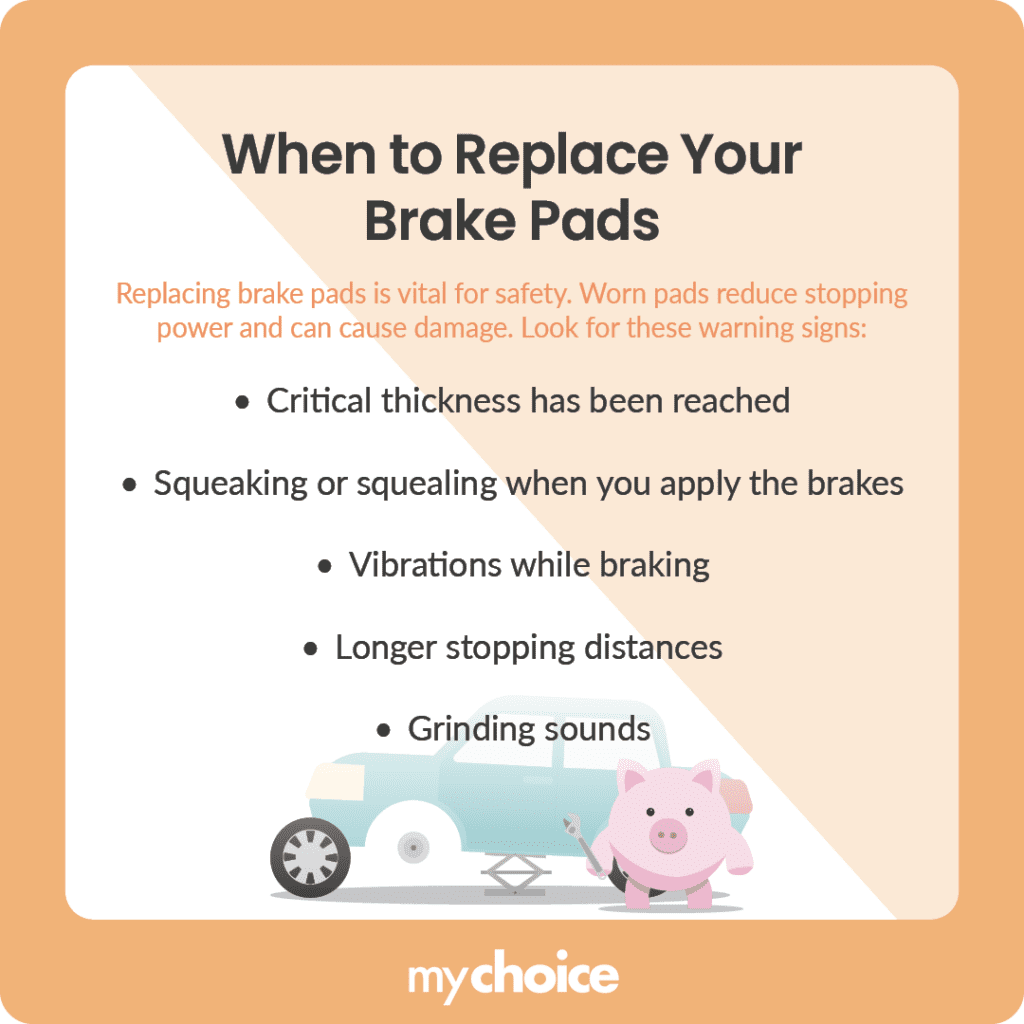As a responsible car owner, it’s your job to make sure your car is in good condition to maintain road safety for yourself and others. A key part that needs regular maintenance is your brake pads, as they’re essential for quickly and safely slowing down or stopping your car. Over time, this part can wear down and fail, causing damage to your car and posing a risk on the road.
Does auto insurance cover brake pad replacement? Learn when your car insurance policy will cover replacement, when to replace your brake pads, and how to replace them using the necessary skills and tools.
When to Replace Your Brake Pads
Knowing when to replace your brake pads is important for maintaining car safety and performance. Worn brake pads can lead to increased stopping distances, decreased stopping power, and potential damage to other brake components. Here are warning signs that you should replace your car’s brake pads:

How to Replace Your Brake Pads
Replacing your brake pads can seem intimidating, but with the right tools and detailed information, it can be a straightforward DIY task that saves you money on labour costs. Here’s a step-by-step guide to safely replacing your brake pads:
- Get your workspace and tools ready. Make sure you have the following items ready:
- Jack and jack stands
- Lug wrench
- New brake pads
- Brake grease
- Brake caliper tool
- C-clamp
- Park your car in a well-lit and safe level area and engage the parking brake.
- Loosen the lug nuts on the wheel where you’ll be changing the pads using a lug wrench.
- Use the jack to lift the vehicle off the ground, then place jack stands underneath for extra safety.
- Remove the wheel and find your brake caliper. Remove the brake caliper’s bolts or pins, then carefully remove the caliper and get the old brake pads from their housing. Clean the caliper housing.
- Apply brake grease to the back of the new brake pads, then insert them into the caliper housing. Make sure they’re properly aligned with the rotor.
- Reset the brake caliper piston by placing a C-clamp across the inner brake pad and caliper body. Gradually tighten the clamp until the piston is completely compressed.
- Reattach the brake caliper and secure it again with its bolts or pins. Make sure it’s tightened according to manufacturer specifications.
- Put the wheel back and tighten the lug nuts by hand, then lower your car to the ground using your jack. Remove the jack stands.
- Tighten your lug nuts to the recommended torque specifications using your lug wrench.
- Start your engine and test the brakes by applying low pressure while driving slowly.
Does Auto Insurance Cover Brake Pads?
No, standard auto insurance policies don’t cover brake pad replacement as their maintenance is considered the car owner’s responsibility as “regular wear and tear”. However, there are some exceptions, such as:
- Your vehicle’s make and model
- Safety features installed on your car
- Your age and marital status
- Any previous traffic violations, insurance claims, or accidents reflected on your driving record
- The neighbourhood you live in
- How long you’ve had your license and your license class
- How much you drive yearly
- The amount of coverage your policy gives
What is The Average Cost of Replacing a Car’s Brake Pads?
The average cost of replacing your car’s brake pads in Canada can vary significantly depending on certain factors. Here’s an overview of how these factors will affect the cost of replacement:
Key Advice From MyChoice
- Before installing new brake pads, make sure they match the old ones in size and shape. The backing plates should have the same configuration. This ensures a good fit within the caliper assembly.
- Sometimes brake pad inspection and replacement can reveal other issues with your car. If your vehicle needs multiple services, ask your mechanic if you can get a discount by bundling those services together.
- Get quotes from various service providers, including chain stores and independent mechanics. Prices can vary significantly, so shopping around can lead to big savings.








